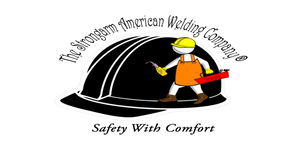Caring for your welding pants is important to maintaining your safety gear. Welding pants are designed to protect you from the hazards of welding, such as sparks, flames, and heat. However, they can only provide the best protection if they are well-maintained. This guide will give you welding pants maintenance tips on caring for your welding pants to ensure their longevity and effectiveness.
Maintenance Tips for Prolonged Use
Proper maintenance of your welding pants is important to getting the most out of them and ensuring they provide the protection you need. Here are some welding pants maintenance tips to help you extend the life of welding pants and ensure they continue serving you well during welding tasks.
1. Regular Cleaning
- Clean your welding pants after each use to remove debris, metal particles, and welding slag. Use a brush or vacuum cleaner to dislodge stubborn particles.
- Follow the manufacturer's guidelines for washing your welding pants. Choosing the right detergent for welding pants.
- Avoid harsh chemicals and bleach, which can damage the fabric's flame-resistant properties.
- Rinse your welding pants thoroughly to remove all soap residue, ensuring no cleaning agents compromise their flame resistance.
Inspection for Damage
- After cleaning, inspect your welding pants for signs of wear, tear, or damage. Pay attention to high-stress areas like the knees and seat.
- Check seams and stitching for fraying or unraveling. Repair any damage to welding pants immediately to maintain integrity and effectiveness.
Washing FR Welding Pants
- If you have flame-resistant (FR) welding pants made of heat-resistant fabric, following specific washing instructions is important to maintain their flame-resistant properties.
- Be sure to use a mild detergent and avoid bleach, as harsh chemicals can compromise the flame resistance of FR fabrics.
- Ensure thorough air drying to preserve the integrity of the flame-resistant coating and keep the fabric in good condition.
2. Proper Storage
- Store your welding pants in a cool, dry place away from direct sunlight and moisture. Excessive heat and humidity can accelerate wear and degrade the fabric over time.
- Avoid folding or compressing your welding pants excessively, which can cause creases and weaken the material. Instead, hang them on a sturdy hanger to maintain their shape and integrity.
- Consider investing in a breathable garment bag to protect your welding pants from dust and debris when not in use, especially if storing them for an extended period.
3. Using Heat Resistant Fabric Care
- Welding pants are designed to withstand high temperatures, so minimizing direct heat exposure is crucial whenever possible. Avoid placing your welding pants near open flames or hot surfaces when not in use.
- Consider using additional protective gear or heat-resistant shields in particularly high-temperature environments to minimize direct heat exposure to your pants.
4. Welding Gear Upkeep
- Proper maintenance of all your welding gear, including helmets, gloves, and jackets, is essential for overall safety and effectiveness.
- Regularly clean and inspect your gear to ensure it remains in good condition and damage-free. Replace any worn-out or damaged gear to maintain optimal protection.
5. Preventing Welding Pant Burns
- While welding pants provide excellent protection against burns, remaining vigilant and following proper safety protocols is crucial.
- Avoid direct contact with hot surfaces or materials. Prolonged exposure to extreme heat can compromise even the most durable welding pants.
- When working, when the risk of burns is high, use additional protective measures, such as heat-resistant gloves or welding blankets.
Replacing Knee Pads (If Your Pants Have Them):
- Kneepads are common in many welding pants, providing extra cushioning and protection for the wearer's knees during prolonged kneeling.
- Inspect the condition of your knee pads regularly and replace them for welding pants maintenance for comfort and functionality.
- Look for signs of wear, such as thinning or cracking, and replace the kneepads to avoid discomfort and potential injury while working.
Conclusion
Taking good care of your welding pants is important for their longevity and functionality. Some key welding pants maintenance tips include regularly inspecting them for damage, cleaning them properly, and storing them in a dry and safe place. By adopting these measures, you can ensure that your welding pants remain in good condition for a long time and continue to provide you with the protection and comfort you need while welding.
Strongarm is the leading welding manufacturer and provider in America. We have a team of trusted professional welders offering a wide range of welding aprons and gears to suit your needs. Contact us today for all your weldings essentials.






